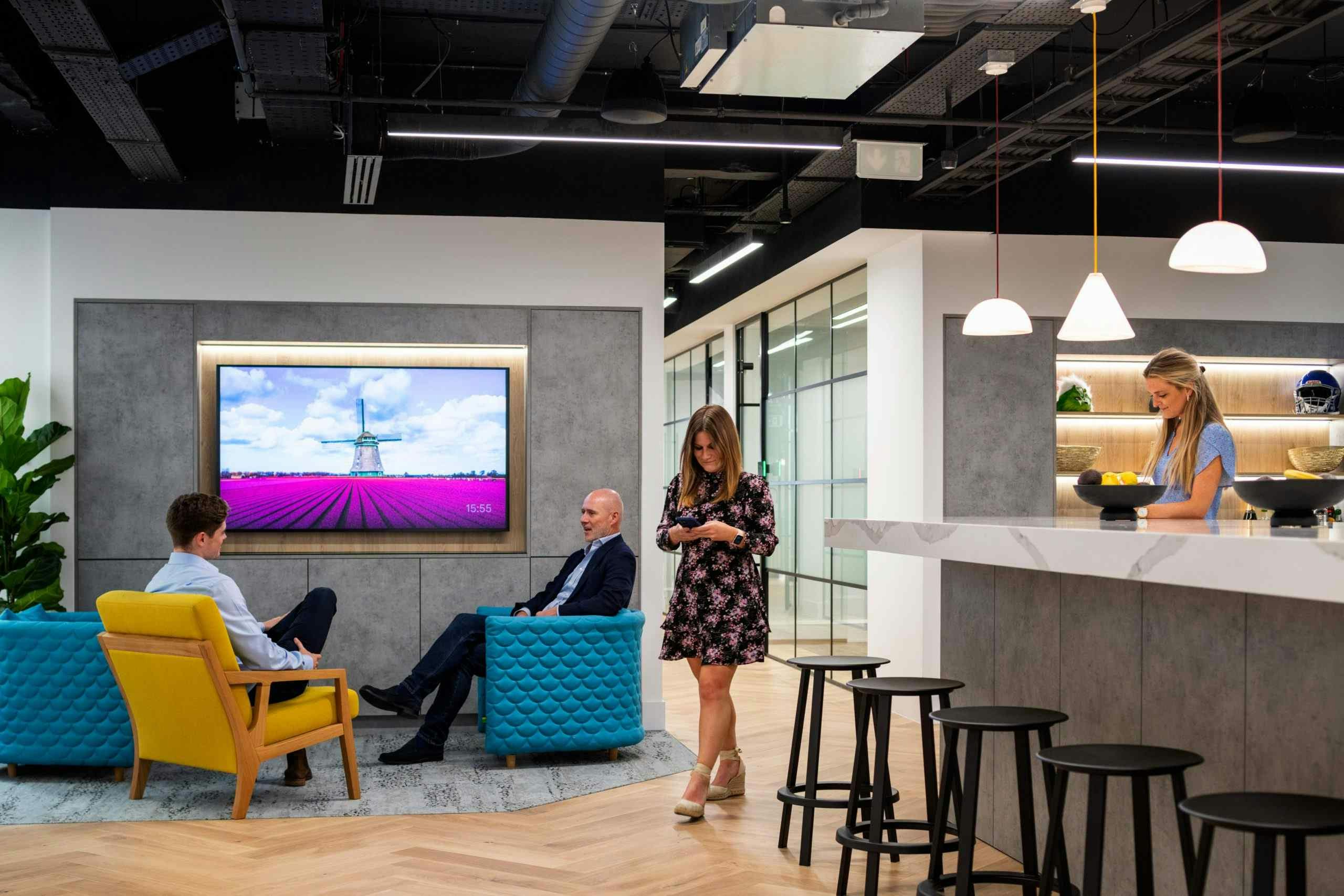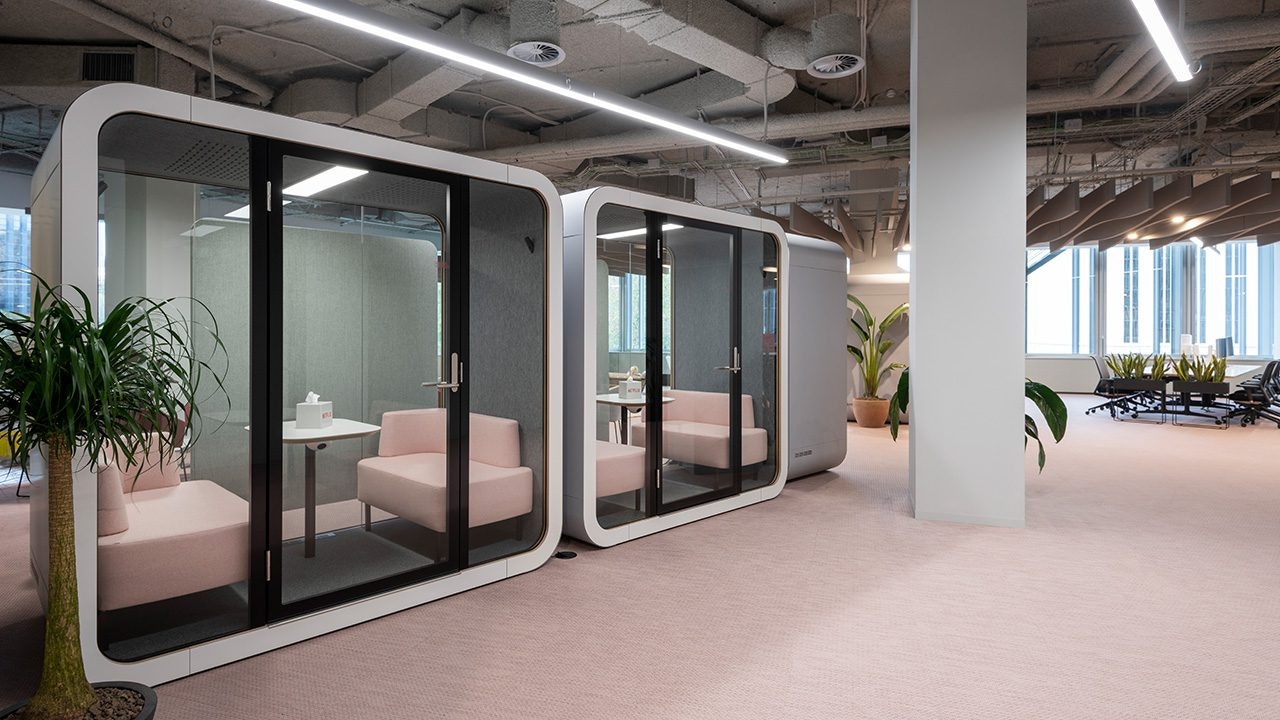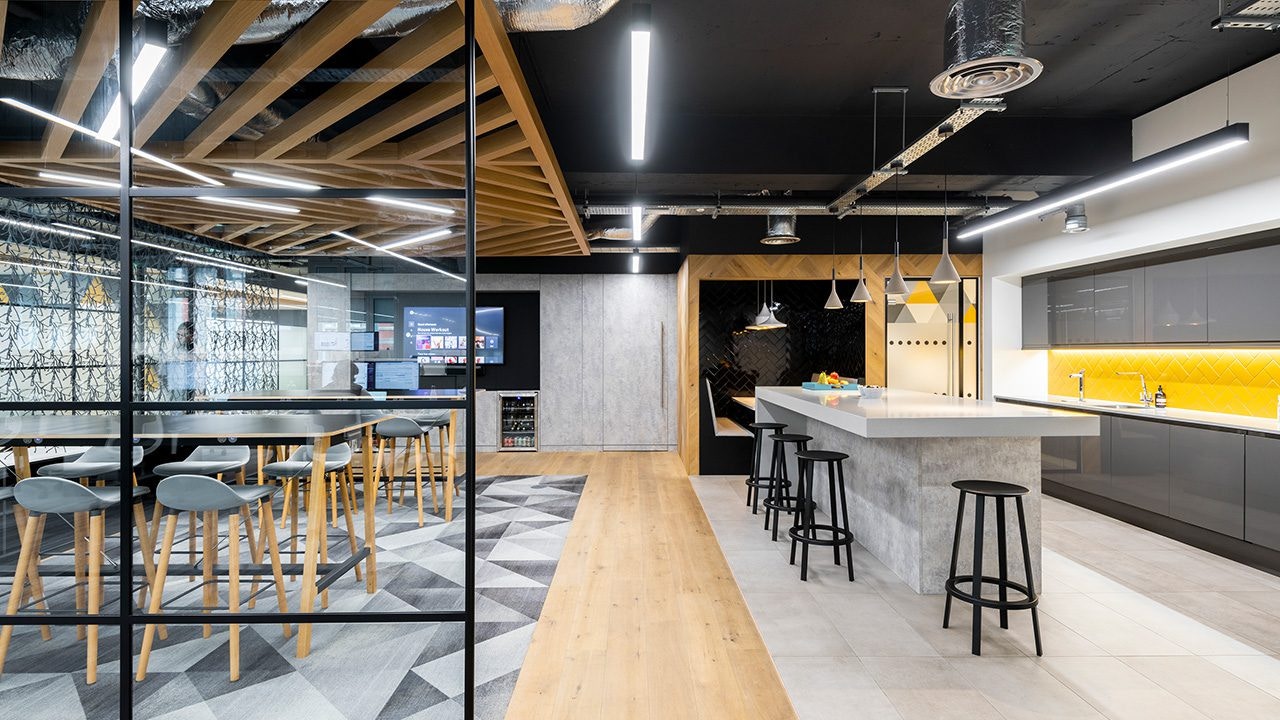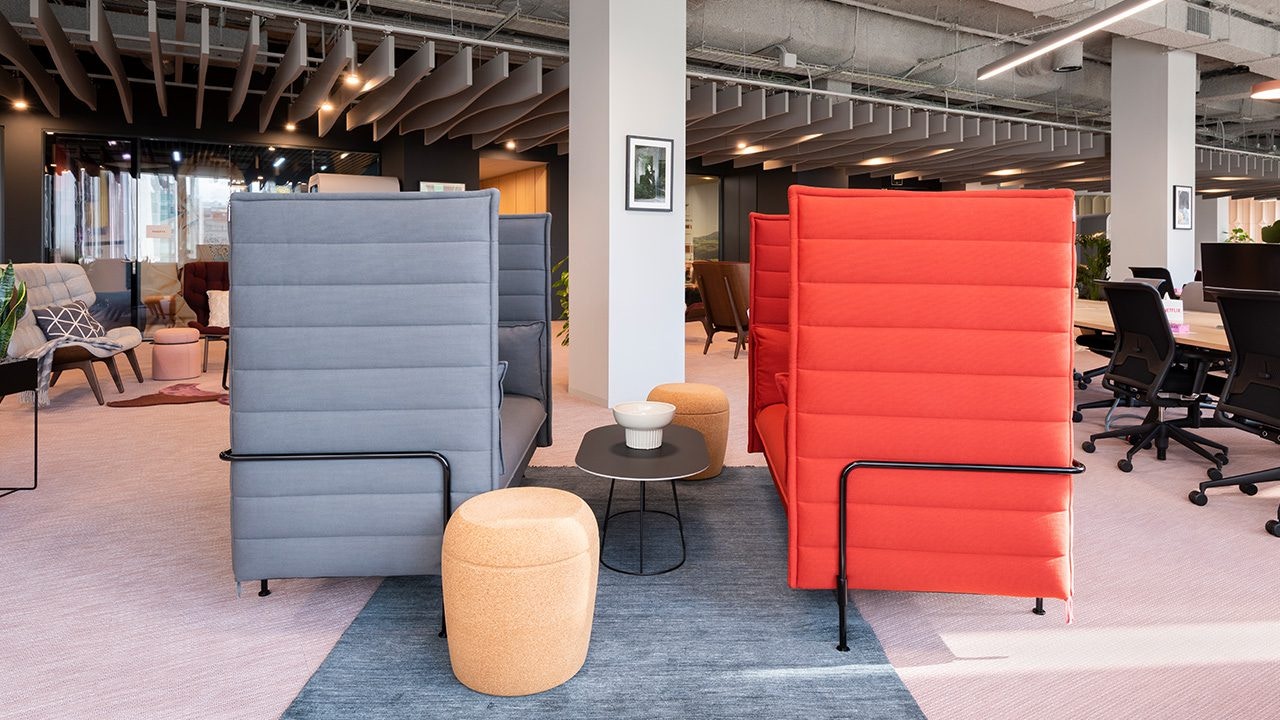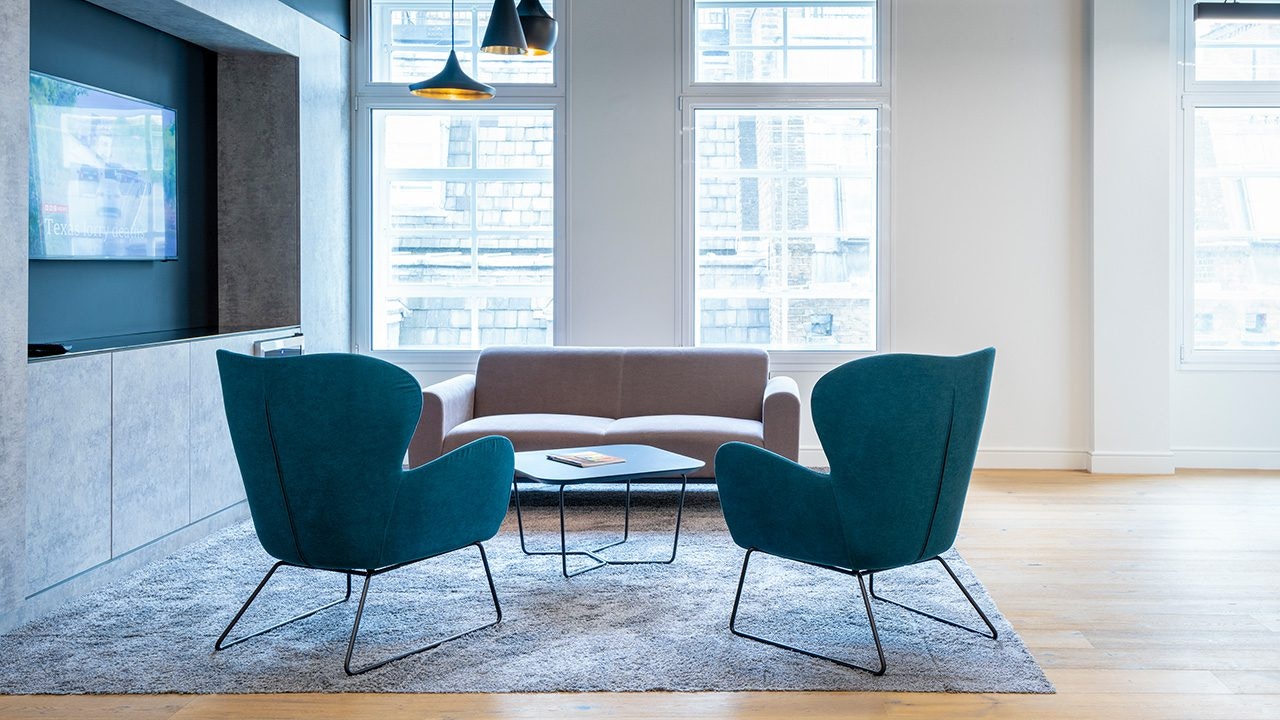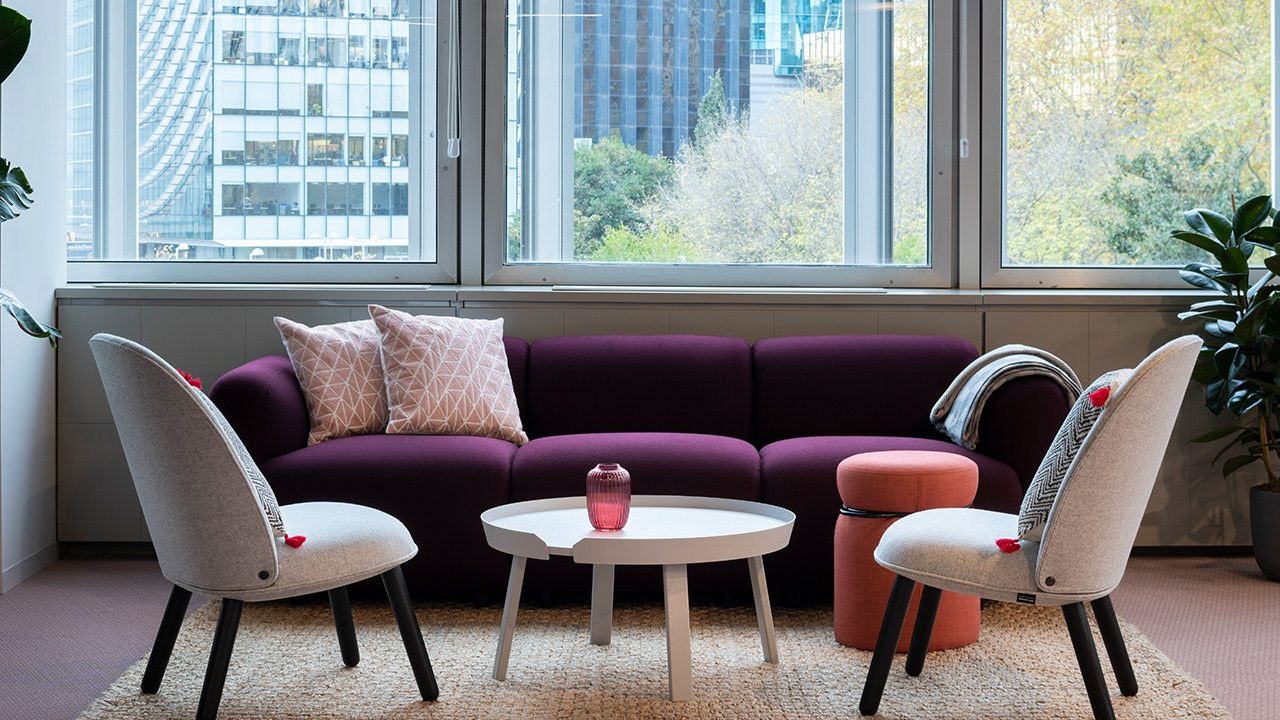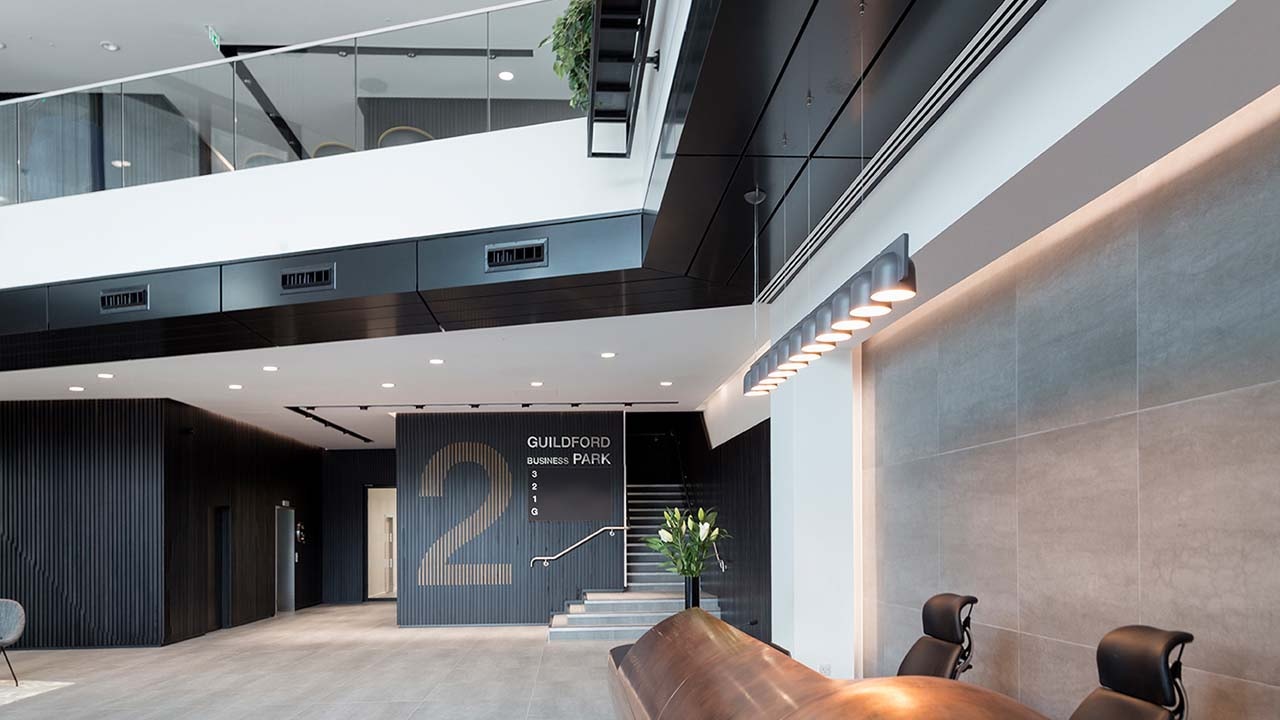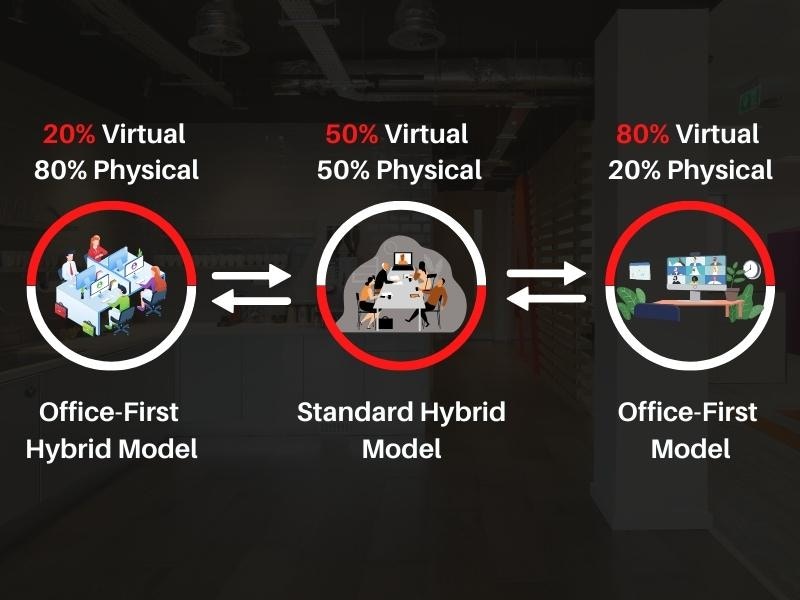When we first started discussing hybrid office design, shortly after the pandemic, we had no idea how quickly it would gain popularity. In 2025 it’s set to remain the cornerstone of the modern workplace. As one of the early adaptors hybrid office design and pioneers in discussions of hybrid workspaces, we feel committed to exploring the latest data and trends. This article looks at how office designs are now shifting to meet the changing dynamics of today’s workforce.
Contents
- Is the hybrid workplace here to stay?
- What exactly is hybrid office design?
- Does a hybrid office mean a smaller office?
- How does the office act as a social anchor?
- Weak and strong ties in a hybrid workplace
- Remote working, innovation and productivity
- Hybrid working and innovation
- Factors driving hybrid working
- Conducting a hybrid working audit
- Nuances in the hybrid working model
